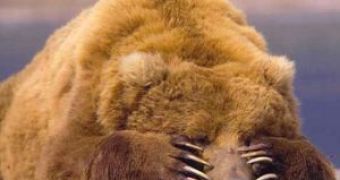There are about 260 species of carnivore mammals today, but only 9 current species reach weights more than 100 kg (bears and the biggest cats) and 9 between 50 to 100 kg (bears, wolf, hyenas and big cats).
British zoologists wanted to see why the overwhelming majority of carnivores are small sized. They noticed different hunting strategies, according to the size of the species.
Species smaller than 15-20 kg hunt especially on very small vertebrates and invertebrates, much smaller than their own weight, whereas larger species (>15-20 kg) hunt especially on large vertebrates, closer to their own body mass.
Medium-sized carnivores - like lynxes - can get higher energy intake by switching to relatively large prey, but a large-prey specialized carnivore expends twice as much energy as a smaller carnivore to catch the same prey. This seems to have led to the extinction of large carnivores in the past and is threatening the largest modern carnivores.
The team at the Institute of Zoology, Zoological Society of London sized the energy expends of carnivores in relation to predator and prey size, and compared the theoretical model with field estimations of metabolic rates and intake rates. The difference between energy intake and expenditure of species showed clearly that mammalian carnivores could not exceed a body mass of one ton.
This is proved by paleontological data also: while the largest extinct terrestrial herbivorous mammal - an extinct rhino from Central Asia named Indricotherium - weighed around 15 tons, the largest existing carnivore - the polar bear - is only around half a ton (sometimes 600 kg) while some morphs of grizzly bear in Alaska can reach 680 kg and the largest known extinct carnivores - the short-faced bear - was around one ton.
But brown bears and polar bears do not usually prey on land mammals; they are largely omnivore (the first) or prey on sea mammals (the last).
The largest terrestrial non-mammalian predator was the dinosaur called Spinosaurus (9 tonnes), but dinosaurs may have achieved their massive size due to their lower metabolic rate. (and even so, they were dwarfed by herbivorous dinosaurs: Argentinosaurus reached 100 tonnes.
The study shows that the current largest carnivores are extremely vulnerable to threats imposed by humans and have higher rates of extinction in the fossil record, even without human intervention, compared to smaller species.
The largest carnivores are heavily reliant on abundant large prey to both minimum energy consume for hunting and keeping high energy intake.
Just a slight environmental stress, man-made or not, means lower prey availability and their existence is put at risk. But the human factor interferes anyway, that's why the largest current carnivores are so rare and vulnerable today.

 14 DAY TRIAL //
14 DAY TRIAL //